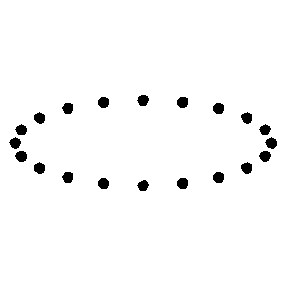Principle
In general relativity, a gravitational wave is a space-time perturbation which propagates at the speed of light. It thus slightly curves space-time, which locally changes the light path. Mathematically speaking, if is the amplitude (assumed to be small) of the incoming gravitational wave and the length of the optical cavity in which the light is in circulation, the change of the optical path due to the gravitational wave is given by the formula: [9] with being a geometrical factor which depends on the relative orientation between the cavity and the direction of propagation of the incoming gravitational wave. In other terms, the change in length is proportional to both to the length of the cavity and the amplitude of the gravitational wave.
Interferometer
In a typical configuration, the detector is a Michelson interferometer whose mirrors are suspended. A laser is divided into two beams by a beam splitter tilted by 45 degrees. The two beams propagate in the two perpendicular arms of the interferometer, are reflected by mirrors located at the end of the arms, and recombine on the beam splitter, generating interferences which are detected by a photodiode. An incoming gravitational wave changes the optical path of the laser beams in the arms, which then changes the interference pattern recorded by the photodiode.
This means the various mirrors of the interferometer must be "frozen" in position: when they move, the optical cavity length changes and so does the interference signal read at the instrument output port. The mirror positions relative to a reference and their alignment are monitored accurately in real time [10] with a precision better than the tenth of a nanometre for the lengths; [11] at the level of a few nano radians for the angles. The more sensitive the detector, the narrower its optimal working point. Reaching that working point from an initial configuration in which the various mirrors are moving freely is a control system challenge; a complex series of steps is required to coordinate all the steerable parts of the interferometer. Once the working point is achieved, corrections are continuously applied to keep it in the optimal configuration. [12]
The signal induced by a potential gravitational wave is thus "embedded" in the light intensity variations detected at the interferometer output. [13] Yet, several external causes—globally denoted as noise—change the interference pattern perpetually and significantly. Should nothing be done to remove or mitigate them, the expected physical signals would be buried in noise and would then remain undetectable. The design of detectors like Virgo and LIGO thus requires a detailed inventory of all noise sources which could impact the measurement, allowing a strong and continuing effort to reduce them as much as possible. [14] [11]
Using an interferometer rather than a single optical cavity allows one to significantly enhance the detector's sensitivity to gravitational waves. Indeed, in this configuration based on an interference measurement, the contributions from some experimental noises are strongly reduced: instead of being proportional to the length of the single cavity, they depend in that case on the length difference between the arms (so equal arm length cancels the noise). In addition, the interferometer configuration benefits from the differential effect induced by a gravitational wave in the plane transverse to its direction of propagation: when the length of an optical path changes by a quantity , the perpendicular optical path of the same length changes by (same magnitude but opposite sign). And the interference at the output port of a Michelson interferometer depends on the difference of length between the two arms: the measured effect is hence amplified by a factor of 2 compared to a simple cavity.
The optimal working point of an interferometric detector of gravitational waves is slightly detuned from the "dark fringe", a configuration in which the two laser beams recombined on the beam splitter interfere in a destructive way: almost no light is detected at the output port.















